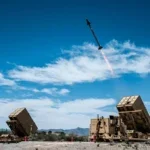
Five years ago, on the eve of passage of the Budget Control Act, then-Secretary of Defense Leon Panetta wrote a letter to the Senate Armed Services Committee warning of a cataclysmic collapse of defense acquisition if the law went into effect.Many of the lawmakers who had a hand in creating the law viewed it as so draconian that it would never pass. It did, and immediately clamped a lid on defense spending through fiscal year 2021.Panetta’s letter enumerated the dire…

 By
By 











